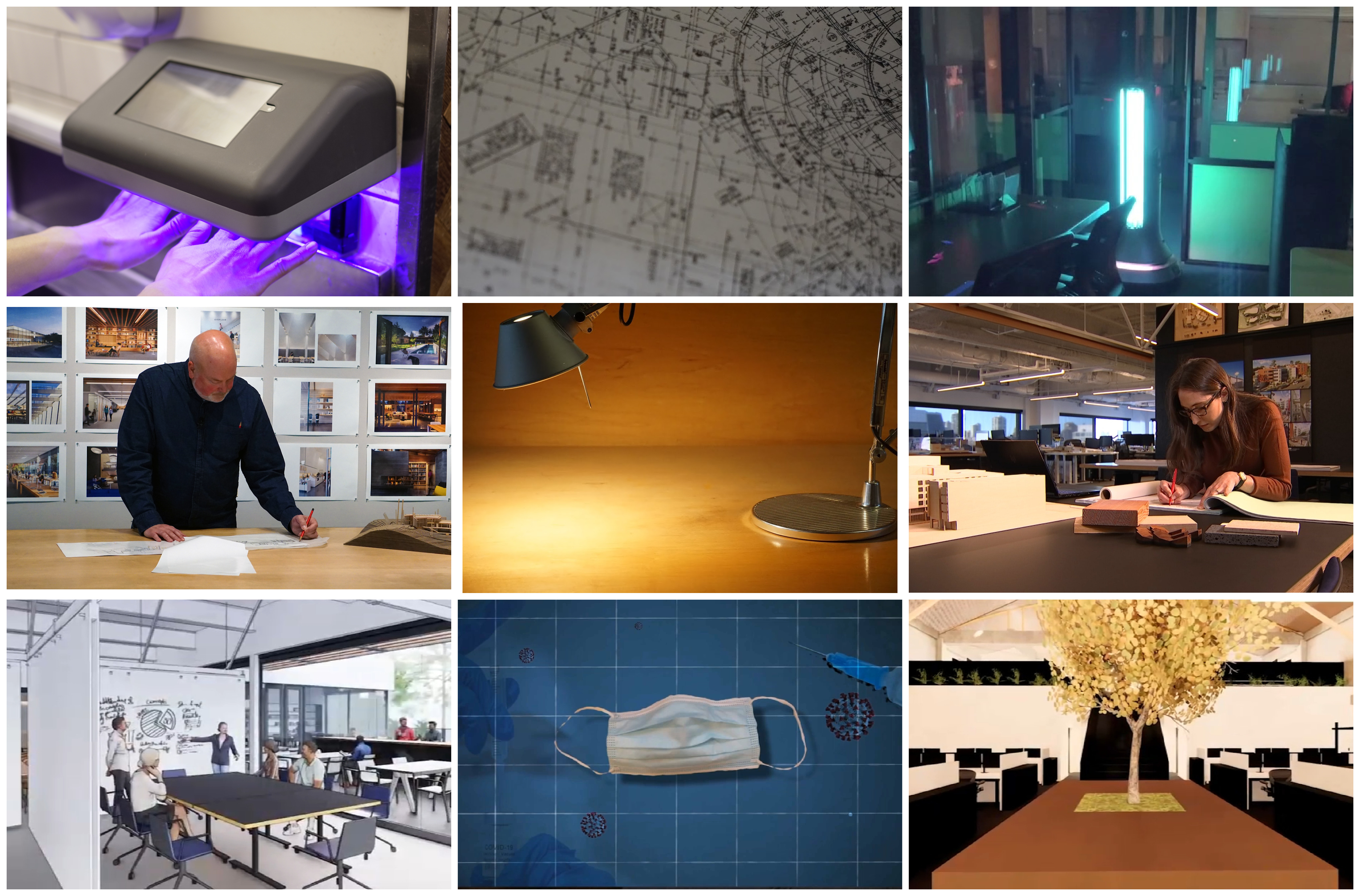Bay Area school districts spent millions of dollars on air cleaning systems, which some air quality experts say could endanger students’ health. An NBC Bay Area Investigation reveals why scientists, including those at the Environmental Protection Agency, are now questioning the efficacy and safety of new technology utilized in some devices that are supposed to clean indoor air.
Industry experts say fears of the pandemic and a willingness of consumers to pay out big bucks have transformed the air cleaning industry into a sort of Wild Wild West. Online advertisements, which seek to recruit new salespeople to hawk the products, promise six-figures in a single month for those willing to sell air purifiers to school districts.
Research scientists have found air cleaners are adding dangerous substances into the air, such as ozone and formaldehyde – toxins considered especially dangerous to the developing lungs of young students.
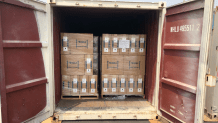
Millions’ Worth of Air Cleaning Devices Sit Unused in Storage Containers
Thousands of air cleaning units, worth millions of dollars, sit in storage at the Sacramento City Unified School District, while school officials question whether the air purifiers live up to claims that the devices can remove COVID-19 from the air. After signing a contract with Johnson Controls Industries for more than $6 million, the school district wrote the company a letter stating the “District will not accept deliveries of the … units until the company has satisfied its concerns ...including but not limited to the claim by [Johnson Control Industries] that the units’ … technology is effective in neutralizing the COVID-19 virus.”
The school district publicly voiced those concerns even after analysis by Forensic Analytical Consulting Services, an environmental health company, did not find any hazardous conditions when testing the units, according to officials with the school district.
“We are actively working with the District to find an alternative that will be beneficial to the District’s students, staff and community,” wrote Kellie Harris, a public relations representative for Johnson Controls Industries, who provided a statement to NBC Bay Area. The company would not say whether it intends to refund the Sacramento City Unified School District any of the millions it paid for the devices.
Harris said the devices, which utilize ultraviolet light, use “science-based, time-tested technology that is safe and effective when applied appropriately.” According to the industry group ASHRAE, formerly known as the American Society of Heating, Refrigeration and Air-Conditioning Engineers, “ultraviolet-C lamps and systems have been used to disinfect room and air streams since around 1900.”
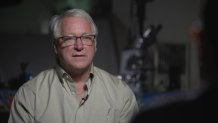
Get a weekly recap of the latest San Francisco Bay Area housing news. Sign up for NBC Bay Area’s Housing Deconstructed newsletter.
Air Quality Expert Warns of ‘COVID-19 Snake Oil Salesmen’
Bud Offermann begs to differ. Offermann is a Stanford trained mechanical engineer who has been studying air cleaning systems for 40 years. While Offermann has serious concerns about the technology, he acknowledges ultraviolet light has a long history as a successful sterilizing device.
“In a surgery ward, they'll have the instruments for surgery in a cabinet with an ultraviolet light left overnight - all that radiation overnight disinfects the surfaces.”
Offermann, however, said that’s quite different than putting an ultraviolet light inside a vent where air is moving quickly.
"You put this UV light in it and it's moving at three to five hundred feet per minute - it’s pretty quick, so there's just not enough time to inactivate the virus or bacteria or oxidize anything. It's really just bells and whistles.”
Offermann is also critical of another newer technology known as “Needlepoint Bi-Polar Ionization,” which adds positive and negative ions to the surrounding air in effort to eliminate toxins. According to companies that sell air ionizing devices, the ions attach to unwanted particles in the air and either neutralize them or make them larger, so they get trapped by a building’s air filtration system.
"It is playing chemistry with the indoor air," said Offermann. “Because they are putting things in the air and reacting with chemicals in the air, they have the potential to create bad things such as formaldehyde, ozone, ultrafine particles."
Offerman says this often pricey technology is in contract to more conventional air purifiers, which do not release any particles in the air and, instead, focus on eliminating pollutants by trapping them with an air filter.
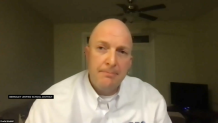
Maker of Ionizing Air Purifiers Says Technology Keeps Students Safe
“We've gone through the gauntlet of tests … to prove that it is safe and that it is effective and is doing what we claim without creating any unhealthy type environment," said Charlie Waddell, the founder and chief technology officer of Global Plasma Solutions. The company, which manufacturers ionizing air cleaners, calls itself the “leader in indoor air quality."
Speaking at a meeting of the Berkeley Unified School District last March, Waddell applauded school officials for buying his products.
We've gone through the gauntlet of tests … to prove that it is safe and that it is effective and is doing what we claim without creating any unhealthy type environment.
Charlie Waddell, founder and chief technology officer of Global Plasma Solutions
“I want to commend you for all you are doing," he said. "I wish all the schools across the country were doing so many things to make sure the kids are staying safe."
Offerman says in an effort to sell more air cleaning devices, some companies have turned into “COVID-19 snake oil salesmen,” touting new technology that doesn’t work.
“The research I've done on these devices, they're not better,” said Offermann. "There are real adverse health effects."
Offerman says harmful byproducts can wind up in human lungs, and respiratory experts say the lungs of young children are especially vulnerable to damage from toxins, such as ozone.
Over the past year, however, schools and businesses have been bombarded with advertisements for devices claiming to make their indoor spaces safe. Offermann says since the start of the pandemic, he’s seen at least 10 times the number of misleading or false claims about air cleaning devices.
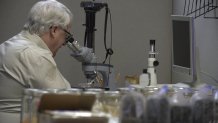
EPA Details Warning About Certain Air Purifiers
According to the Environmental Protection Agency, newer air cleaners that use bipolar ionization are part of an “emerging technology,” where “evidence for safety and effectiveness is less documented.”
The EPA also says these devices have the “potential to generate ozone and other potentially harmful by-products indoors.”
The Berkeley Unified School District spent more than $1million on air purifiers from Global Plasma Solutions and a total of $3.2 million upgrading its HVAC system. After contracting an engineering firm, Shoreline Environmental Resources, to test the units, the district tells NBC Bay Area it is satisfied they are working properly, adding it will continue to use them in the classroom.
The nearby Newark Unified School District, however, isn’t convinced about the devices' effectiveness and safety record. After purchasing $360,000 worth of air cleaning devices from Global Plasma Solutions, the district disconnected the equipment in May.
"When we learned the safety and effectiveness of the GPS ionization devices was being questioned, we disabled the devices immediately," wrote Superintendent Mark Triplett in a statement sent to NBC Bay Area. Triplett added that the district has yet to make any decision on whether to demand a refund from Global Plasma Solutions.
"We are in the process of investigating this situation with our lawyers, and based on the information we obtain, we will make a decision," Triplett wrote. "No decision has been made yet. Our main concern is safety for students and staff. You can be sure that we feel a tremendous obligation to ensure that the tax dollars allocated to public education are optimized to provide our students with an excellent education and provide our dedicated staff and students with the resources they need to succeed."
Watch Our Previous Investigations
This all comes as a proposed class-action lawsuit is accusing Global Plasma Solutions of making “false, misleading, and deceptive” claims, adding that its products “make the air worse for people.” Global Plasma Solutions says the lawsuit was built on “faulty assumptions” and has filed a motion to dismiss the case. (link to motion to dismiss)
“They're definitely misleading,” said Bud Offermann, whose been hired to testify as an expert witness in the lawsuit against Global Plasma Solutions and says he reviewed the company’s own performance data.
I used their test data, which shows that the device does hardly anything.
Bud Offermann, describing his review of performance data from Global Plasma Solutions
“They had the most test data up on their website, which is all gone now. It’s all been removed from their website,” he said. “I used their test data, which shows that the device does hardly anything.”
In the 1980s, Offermann worked for the Federal Trade Commission, the national agency in charge of investigating deceptive business practices. During the pandemic, consumer complaints to the FTC about fraudulent practices have spiked 45%, with consumers reporting more than $500 million in COVID-related losses. While the FTC said it has issued warning letters to some air purifying companies for deceptive marketing during the pandemic, NBC Bay Area has learned the agency has not issued any official enforcement action against air purifying companies since the start of the global health crisis. Offermann says a lack of oversight is allowing companies to profit from fear of the coronavirus.
“There's no government regulation,” Offermann said. “I think we need to get the Federal Trade Commission to step in here and do a little policing.”
Emerging Technology Allows You to Monitor Indoor Air Quality
As consumers attempt to sort out which indoor purifying products are actually delivering clean air and which are full of hot air, an entire industry has emerged devoted to giving consumers the power to find out.
“I think when you walk into a building, it's going to become almost expected that there's a display showing the quality of the air in that facility,” said Dustin DeVan, CEO of Awair, which sells indoor air quality monitors. The sensors are designed to detect dangerous pollutants in the air, and warn consumers about a lack of ventilation in their space.
“We believe that everyone has a right to know...what's in the air they breathe,” said DeVan.

To help consumers determine if their indoor conditions are safe, Awair monitors track a wide-range of factors, including temperature and humidity, volatile organic compounds, carbon dioxide, fine dust particles, and even lighting and noise. Individual Awair devices for the home cost $149, while air quality monitors designed for use at a workplace retail for $499 per device. According to DeVan, the monitors are designed to be placed in each enclosed room of a building. For larger open areas, he recommends installing a device about every 3,000 square feet.
Data collected by the monitors is constantly uploaded into the cloud, so users can check air quality levels at any time and even receive alerts on their cell phones.
“You want to monitor it in real time, because often there is an event that triggers something that changes the environment,” DeVan said. “If you're not doing real-time monitoring and, say, you do sporadic (monitoring), then you might never know that you had a spike and you're never going to be able to resolve that problem.”
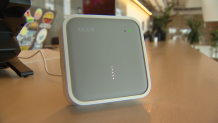
Poor Indoor Air Quality Can Lead to Wide Range of Health Problems
Studies have shown that poor indoor air quality, especially when too many fine particles are present - can lead to a host of health problems, including lung and heart diseases.
According to the International Journal of Environmental Research and Public Health, indoor air pollution is a serious threat to human health, causing millions of deaths each year.
“The quality of the air you breathe can have an impact on how you function on a daily basis,” DeVan said. “At a high carbon dioxide level, your mental efficiency goes down.”
Companies that sell air quality monitors hope to arm consumers with the tools they need to make informed decisions about their own air quality as well as the air purifying products they use. However, even the technology behind air quality monitors has its critics. Studies have questioned their accuracy and warn they may underestimate the amount of pollution in the air.
According to the EPA, the "more affordable prices" offered by low-cost air quality monitors has allowed for an increase in "access to air quality information" that "allows more people to be involved."
An EPA spokesperson, however, notes "the performance and reliability of low-cost sensors can also vary greatly depending upon the device or manufacturer" and may produce data that "systemically over-or-under estimates the actual pollutant concentration."
Awair tells NBC Bay Area its monitors have a high level of accuracy and say using even more precise sensors, like what you’d find in a laboratory, would make the devices too expensive for the average consumer.
“This sort of technology is very, very new,” DeVan said. “Actually being able to commercialize it into a reasonable cost that almost any business can afford is a breakthrough.”
Over the past year, Awair sold 35,000 air quality monitors and plans to double its sales and triple its 40-person staff in 2022, according to a company spokesperson.
“Now that the technology is available, you're starting to see adoption,” DeVan said. “We'll monitor more square footage next year than we've done in the entire history of Awair.”
Some California Schools to Receive CO2 Monitors
While air quality monitors aren’t required in buildings, California lawmakers recently made $375 million dollars in funding available for 6,000 schools to install carbon dioxide monitors as well as complete other ventilation system upgrades and improvements. A high level of CO2 can be an indication of poor ventilation, so the monitors can be used to warn consumers about potentially dangerous indoor air conditions.
The program is the result of Assembly Bill 841, which was signed into law last year. About 60% of public schools in the state are eligible to apply for the funding, which is expected to be distributed later this year.
“We know we have a problem with indoor air quality,” said Andrew McAllister, a commissioner with the California Energy Commission, the state agency that oversees the new program and helps formulate new building requirements as part of California’s building code.

California to Mandate New Inspections for Heating/Cooling Systems
While the debate continues over newer air cleaning technologies, McAllister notes that many buildings are still ignoring basic safety protocols, such as utilizing highly-rated filters, ensuring proper ventilation, and undergoing routine maintenance for heating and cooling systems.
The prevalence of improperly installed heating and cooling systems is why the state is instituting a brand new certification program this October.
The Acceptance Test Technician Certification Provider Program (ACTTCP) will require all new, non-residential buildings to undergo mandatory inspections of their heating and cooling systems prior to opening their doors.
In the past, said McAllister, once a building was constructed and a local building department signed off on it, there was no further inspection required of the air filtration system. The new program, however, adds an additional layer of oversight to heating and cooling systems, which have become more complex in recent years.
“They do require a level of competence and installation that I think historically hasn't really been the case,” said McAllister. "We're requiring … this next level of technical evaluation to make absolutely sure that the system is installed properly.”
The reform effort, however, will be far from a panacea since it will only impact newly built structures, leaving out the state’s aging building stock.
As confusion continues over what types of purifying devices might serve as the best form of protection against dangerous pollutants, some believe mandating the installation of indoor air quality monitors may be one way to finally clear the air.
“As the technology improves, and it is rapidly improving, I think, yeah, that will be mandated either by government or insurance companies,” said Offermann. “I believe we’re headed that way.”
Watch Our Entire Investigative Series
- Part 1: What Will Offices, Homes Look Like Post-Pandemic
- Part 2: Worried About Returning to Work? Here's What to Ask Your Boss
- Part 3: Schools Spent Millions to Clean Indoor Air, Now Some Fear Technology is Dangerous
submit tips | 1-888-996-TIPS | e-mail Bigad


